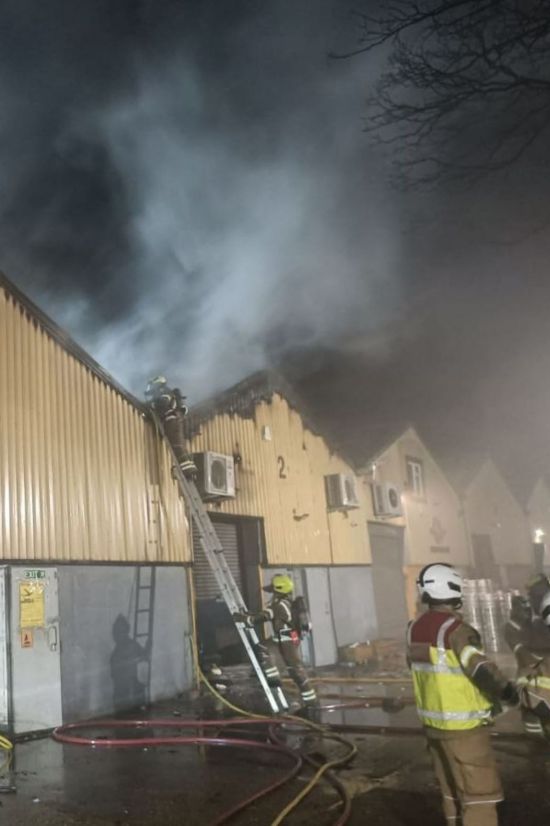London Warehouse Supplying Ukraine Targeted in Arson Plot Livestreamed by Men Recruited by Russian Mercenaries
A dramatic court case has revealed how a group of men allegedly carried out a deliberate arson attack on a London warehouse supplying satellite internet equipment to Ukraine — all while livestreaming their criminal act. The incident, which caused nearly £1 million in damage, was orchestrated by individuals linked to the Russian mercenary group Wagner, raising serious concerns about foreign interference on British soil.
The Blaze That Shook East London
In the early hours of 20 March last year, a fire broke out at a warehouse in Leyton, East London, igniting a blaze that rapidly escalated into a major emergency. Firefighters from eight crews battled the flames for hours, facing a significant challenge as the fire threatened not only the property but also nearby residents.
The warehouse was not just any ordinary storage facility — it was a critical hub involved in supplying Starlink satellite internet equipment to Ukraine, supporting communication efforts amid ongoing conflict. The fire caused extensive damage, estimated at around £1 million, disrupting humanitarian aid and logistics operations linked to Ukraine.
The Men Behind the Attack
Court proceedings have disclosed that the attack was masterminded by two men, Dylan Earl, 20, and Jake Reeves, 23, who have admitted to aggravated arson and offences under the National Security Act. Both are accused of carrying out the attack on behalf of the Wagner Group, a Russian mercenary organization known for its covert operations abroad.
Alongside Earl and Reeves, four others were allegedly recruited to carry out the arson. Jakeem Rose, Ugnius Asmena, Nii Mensah, and Paul English stand accused of participating in the plot, although some deny involvement.
Livestreaming a Crime
In a chilling detail, the court heard that as the fire was being set, one of the arsonists filmed the entire attack on his mobile phone and livestreamed it in real-time via FaceTime. This brazen act not only captured the destructive event as it unfolded but also potentially served as proof of the attack for their recruiters.
CCTV footage, traffic cameras, and mobile phone records helped prosecutors track the suspects’ movements. The group was seen traveling in a small Kia Picanto, filling a jerry can with petrol, climbing over a wall, and deliberately setting fire to the warehouse doors.
A Heroic but Futile Attempt to Stop the Blaze
At the time the fire ignited, a lorry driver parked nearby noticed the smoke and tried valiantly to extinguish the flames. Despite his courageous efforts, the fire quickly overwhelmed him, forcing the arrival of professional firefighters who contained the inferno after an intense struggle.
Political Motives Behind the Attack
Prosecutors emphasized that this was not a random act of vandalism but a calculated and politically motivated attack influenced by foreign interests. The warehouse was specifically targeted due to its role in supporting Ukraine — a nation engaged in ongoing conflict with Russia.
While some perpetrators may have been driven by financial incentives, the prosecution argued that for others, the attack had clear ideological motives. It was designed to intimidate and disrupt aid efforts, sending a message aligned with the objectives of the Wagner Group and its backers.
Other Related Plots and Broader Conspiracy
The court also revealed that Dylan Earl and Jake Reeves were involved in other plots linked to the Wagner Group, including plans to set fire to high-profile London businesses and even kidnap an owner in Mayfair, a prestigious area in West London.
These additional schemes reportedly involved discussions of using explosives, illustrating the dangerous and escalating nature of their plans.
The Trial Continues Amid Denials and Charges
Some of the accused have denied the aggravated arson charges, while others face additional allegations of failing to disclose information about terrorist activities.
The trial is ongoing, with prosecutors presenting what they describe as overwhelming evidence. The case has cast a spotlight on the shadowy efforts of foreign mercenary groups operating covertly in the UK and highlighted the risks posed to national security by such criminal enterprises.
Conclusion
This case underscores the evolving threat landscape where foreign political conflicts are being fought not only on distant battlefields but also within the streets and warehouses of major cities like London. The use of technology to livestream and broadcast acts of violence adds a disturbing new dimension to traditional crimes, raising urgent questions about prevention and security in an increasingly interconnected world.
As the court continues to hear evidence, the nation watches closely, aware that this trial could reveal more about the extent of covert foreign interference and the lengths to which some will go to pursue their political and ideological goals on British soil.
